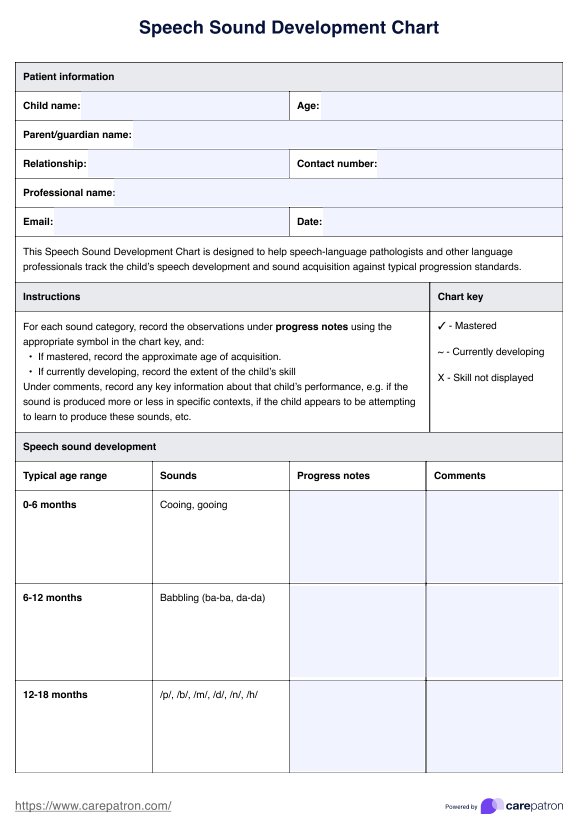The Speech Sound Development Chart outlines the average age ranges at which most children master specific consonant sounds. This chart serves as resource for speech therapists and educators to assess a child's speech development and detect delays.

Speech Sound Development Chart
Use our Speech Sound Development Chart template for tracking speech sound development in children and identifying language acquisition delays.
Speech Sound Development Chart Template
Commonly asked questions
Although variability is normal, most children are expected to be fully intelligible by age 4.
Final consonant deletion is a typical error where a child omits the final consonant in words (e.g. "ca" for "cat"), which is common until age 3. 'Stopping' is another example, in which sounds that require a long airflow are replaced with a short one (e.g. "sh-oe" becomes "t-oo). 'Voicing' refers to when voiceless sounds are replaced with voiced consonants (e.g. "t-ea" becomes "d-ea".)
It's important to recognize these errors are only problematic if they persist beyond developmentally appropriate age.
EHR and practice management software
Get started for free
*No credit card required
Free
$0/usd
Unlimited clients
Telehealth
1GB of storage
Client portal text
Automated billing and online payments











